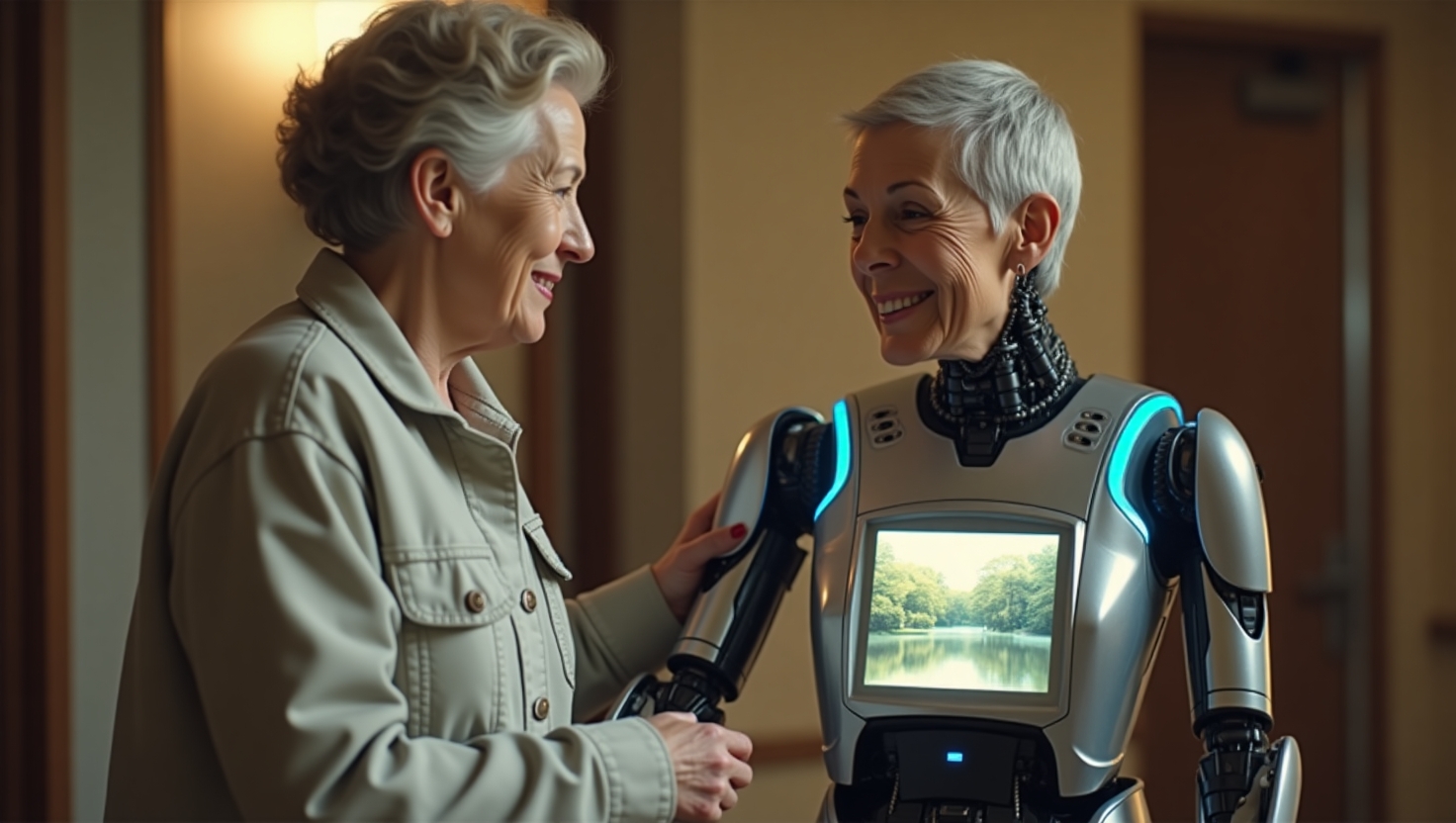Care Robotics: Automating Autonomy for Aging Populations and Rehab Patients
Introduction: Why Care Robotics Deserves Attention Now
What is care robotics? These are innovative robots that enhance elderly autonomy through AI-driven mobility assistance, companionship, and rehab support. Global aging populations surge, creating caregiver shortages that disrupt families worldwide.
Rising demographics highlight the core problem: one person’s disability often disrupts an entire family. Care robotics addresses this by promoting elderly autonomy and reducing burnout. The United Nations predicts aging populations will grow 50% by 2050.
RobotGym showcases breakthroughs like emotional companionship and mobility aids. Their solutions empower users, blending technology with daily care needs.
The Care Gap: Why Automation Is Essential
Overburdened healthcare systems strain families facing caregiver shortages. Diminished elderly autonomy arises from safety risks and social isolation. Care robotics fills this gap by automating routine tasks.
RobotGym’s founding story traces back to German AI robotics expertise. Led by Yunlei Shi, the team draws from top institutes to solve family imbalances. This innovation bridges human touch with tech efficiency.
AI caregiving integrates emotional support and practical help. It ensures seniors maintain independence without constant human oversight. Such advancements prove essential for modern care challenges 36kr.
3 Key Trends Powering the Care Robotics Boom
Care robotics surges with AI advancements and market demands.
-
AI-Powered Utterance & Mobility: Multi-modal models enable natural conversations in RobotGym’s Qi Jia series for emotional companionship. Safe navigation uses low-profile chassis and remote emergency stop tech. These features boost elderly autonomy in daily life.
-
Commercialization Acceleration: Funding exceeds $100M in 2023, per Dealroom reports. RobotGym secured millions in seed funding for scalability. This fuels rapid deployment of AI caregiving solutions.
-
Rehabilitation Specialization: Rehab robots achieve 30% efficiency gains in mobility recovery, per clinical studies. RobotGym’s Ge Wu series exports globally after thousand-unit shipments. They transform rehab for aging populations 36kr.
Industry Insider Insights: What’s Next?
Leaders predict safety as the top priority for AI caregiving. Regulatory standards may emerge by 2025, ensuring reliable tech. Human-robot collaboration will blend companionship with clinical care.
Pilot programs show 92% of users report improved elderly autonomy. RobotGym’s data validates these gains in real settings. Future designs emphasize ethical, user-centered approaches.
Forecast: 2026–2030 – The Age of Mass Care Robotics Adoption
Standardized deployment begins in 2026 with RobotGym’s Qi Jia series mass production. By 2028, AI caregivers integrate into 15% of global hospital rehab robots units. Market growth projects a $25B care robotics sector by 2030, per McKinsey.
Ethical design remains crucial for human-centered ethics. Advocacy pushes for inclusive tech that supports all users. This roadmap promises widespread adoption.
For video insights, watch RobotGym’s demo: RobotGym Demo Video to see care robotics in action.
Call to Action: Prepare for the Future of Care
Caregivers and clinics: Start testing prototypes today. Explore RobotGym demos for hands-on experience. This step eases family caregiver burnout.
Policymakers: Advocate for rural AI caregiving infrastructure grants. Support expands access in underserved areas. For Australia-specific resources, visit Aged Care Robotics Australia.
Innovators: Join seed funding opportunities. Reference RobotGym’s US/EU/Asia partnerships for collaboration. Learn more at RobotGym Partnerships.
FAQ
- How do rehab robots improve autonomy? Rehab robots enhance mobility recovery, allowing independent movement and reducing dependency on caregivers.
- Benefits of AI caregiving for seniors? AI caregiving provides emotional companionship, safety monitoring, and daily assistance, boosting elderly autonomy and quality of life.
